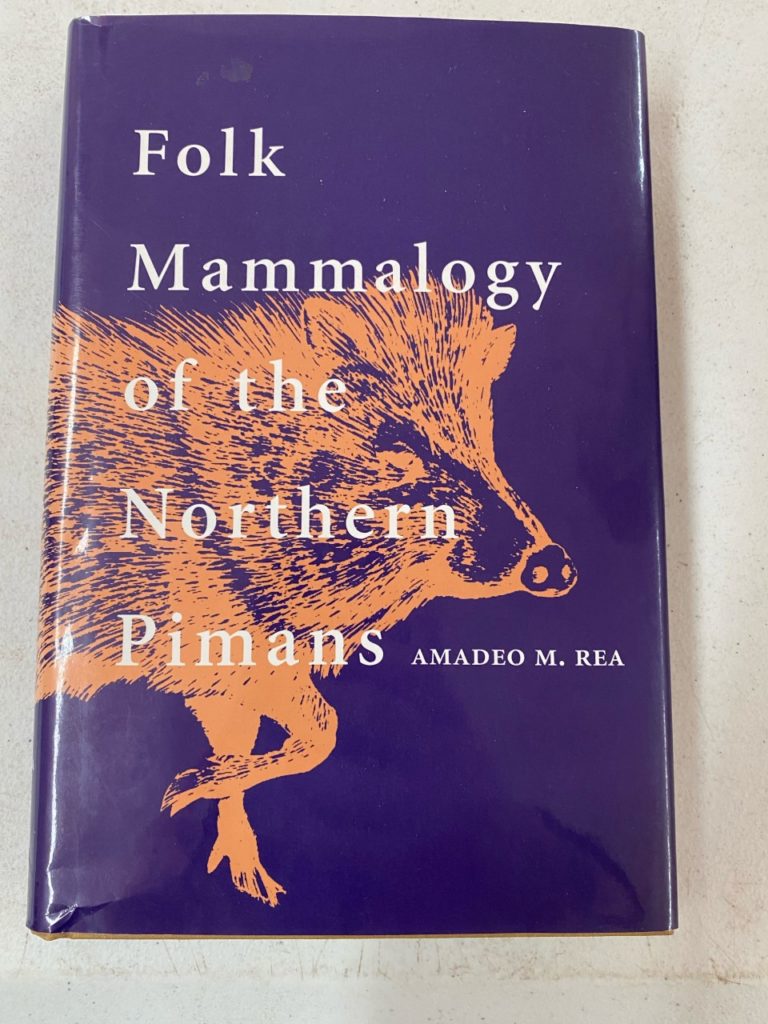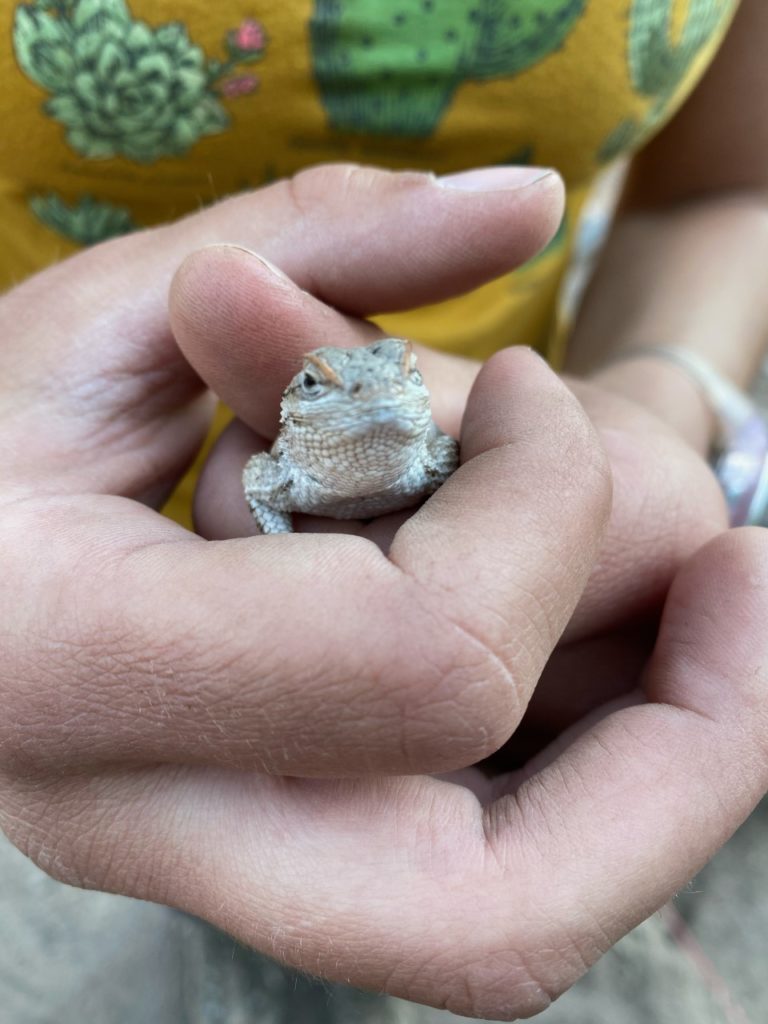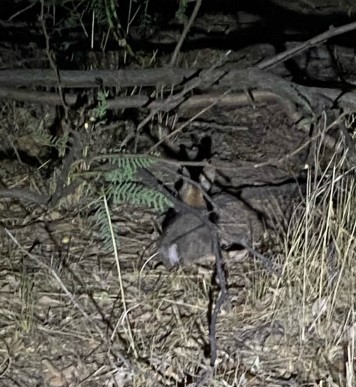- Home
- >
- Preservation Archaeology Blog
- >
- Cottontails, Skunks, and Scorpions—Oh My!
(July 5, 2021)—The first animal I saw in the wilds of New Mexico was a scorpion. We were on our first day of excavation in our unit, and we were digging a trench along a known South wall of Room 454, all the way down to the bottom cimientos (base rocks of the adobe architecture of the region). I was digging from above, and another team member was digging from within the trench itself, just wide enough for one person to move around in comfortably. As we removed a stone using our shovels, a white scorpion seemingly popped into existence, tail arched over its body, ready for a fight.
In the following days, I saw plenty of animals we don’t typically see even in zoos back on the East Coast: mule deer, lizards, a roadrunner, a near-miss with a Great Horned Owl on an evening car trip back to camp, and a skunk charging at myself and another student as we attempted to take our lunch break on site. These feature prominently in my mind.
This program is the first time I’ve seen a desert in person. As a zooarchaeologist and paleobiologist in-training, I am always interested in the environment and fauna in the regions I find myself in. Because I had limited experience with the region previously, I have made it my mission to not only see the extant (living, modern) fauna, but also to look into the fauna that would have been present during the Salado era. To this end, I popped into a local bookstore, where the owner introduced me to a wonderful book that describes the folk mammology of the region. I have learned a great deal from it, but learning about fauna in a book and experiencing it firsthand are very different—it’s like watching sports rather than playing them.

My friends back East have owned bearded dragons before, and I am comfortable with them. Still, seeing a juvenile “beardie” out in the desert after it got caught in one of our screens was a new experience. The little guy seemed alright and was released after a little tour of our site (you may see his picture below). Even though bearded dragons aren’t on the list of natural reptile inhabitants of the Chihuahuan Desert, this juxtaposition of my experiences with them illustrates my point: that seeing these creatures in documentaries, zoos, domestic situations, or in textbook pictures are never really the same as getting to see them out in nature.

My most recent experience, although not unusual in other environments and places in the United States, was with a baby cottontail rabbit. In the middle of camp, on a late night working on my outreach project for the Archaeology Fair, I heard a sound to my left. When my light shone on the perpetrator, I realized it was a sweet little baby cottontail. It did seem a bit confused—well, I was, too—and we simply watched one another for a few minutes before I continued to my tent.

I look forward to experiencing more of New Mexico and Arizona’s wildlife for the remainder of my stay. My list of local fauna I would love to see includes javelina, elk, burrowing owls, coatimundi, ocelot, and kangaroo rats.
4 thoughts on “Cottontails, Skunks, and Scorpions—Oh My!”
Comments are closed.
Wonderful experiences for you, Guinevive. A bearded dragon!! Wow. Wish I’d seen it.
Fun stuff! Thanks for sharing!
I enjoyed your report and wish you the best as you pursue your career.
Bearded dragons do not occur in North America, and I believe are restricted to Australia. Unless this was an individual from the pet trade, you probably caught a Horned Lizard, which are fairly common in the western deserts of this continent. They certainly resemble Bearded Dragons—though are much smaller—with their fat bodies and a fringe of “horns” at the back of the head. The genus is Phrynosoma. They feed primarily on ants but usually don’t survive in captivity.
I hope you get to see kangaroo rats, javelina etc. Try “road hunting” after dark when the reptiles linger on warm surfaces and nocturnal mammals go about their business!
I enjoyed reading about your encounters with desert wildlife and hope you continue to meet many more. Amadeo Rea’s book is a great resource!
I concur that the lizard is highly unlikely to have been a Bearded Dragon (if it were, I’d be a bit worried about the potential for escaped pets to become invasive in our deserts). If it lacked the fat flattened body and fringe of large head spines seen on a horned lizard, it might instead be a spiny lizard. The dark stripe through the eye and the apparent lack of large head spines (which would be hard to see in this beautiful close-up of its face) made me think immediately of a Clark’s spiny lizard (Sceloporus clarkii), one of my favorite desert lizard species.